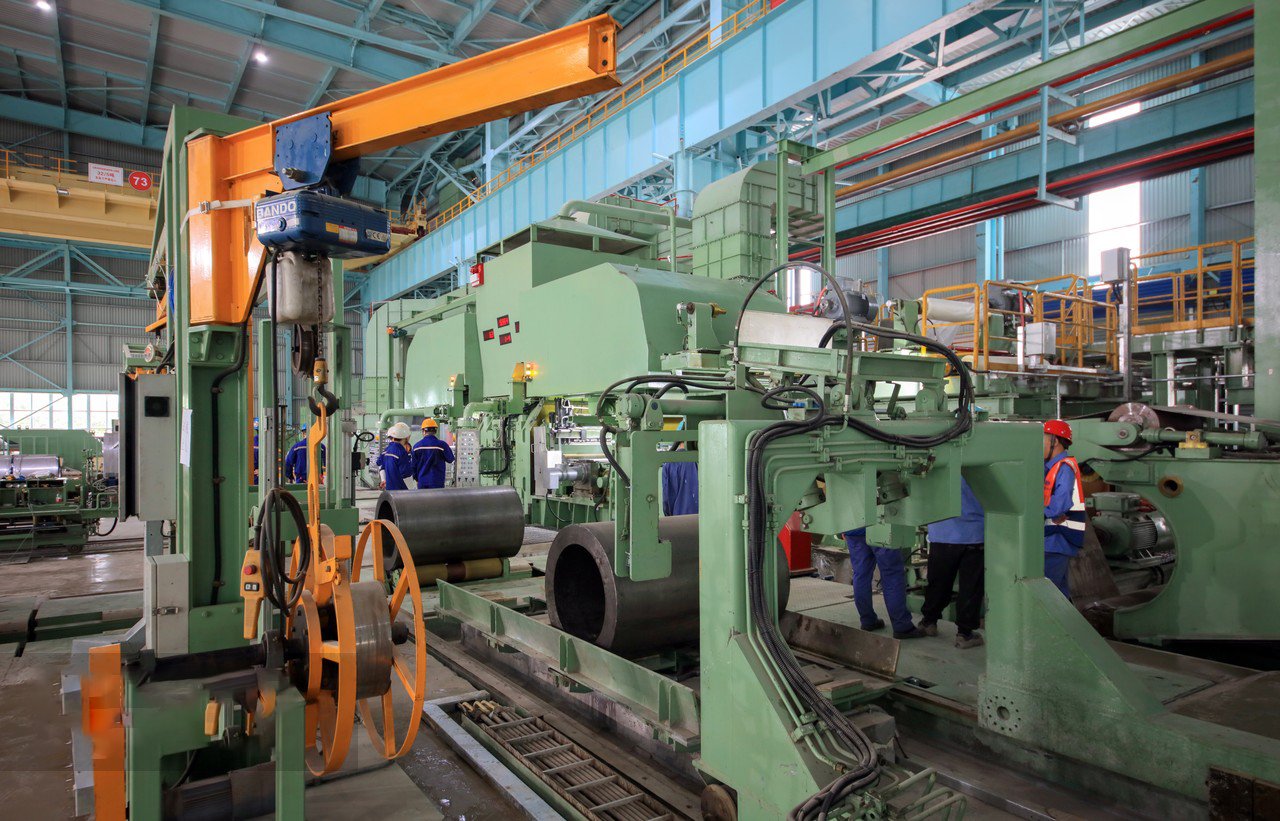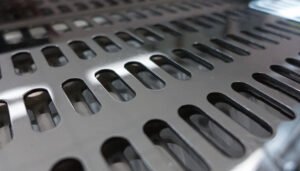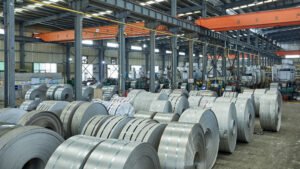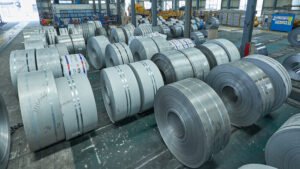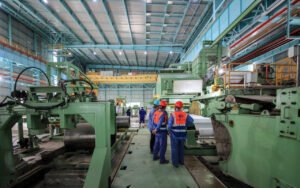Using Stainless Steel Sheet for Lithium Battery Enclosures: Safety & Heat Resistance
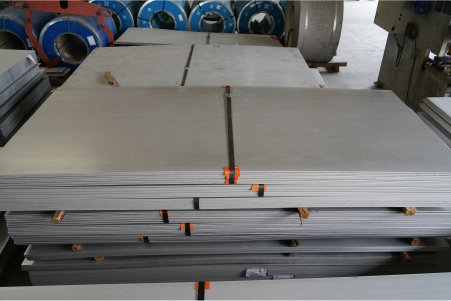
Are you concerned about the catastrophic risk of thermal runaway in lithium-ion batteries? This danger keeps engineers and product designers awake at night, as an enclosure failure can lead to devastating fires and irreparable brand damage. Stainless steel sheets offer a proven, robust solution for containment.
Stainless steel sheets provide superior safety and heat resistance for lithium battery enclosures by effectively containing thermal runaway events. Their high melting point and exceptional structural strength prevent breaches and fire propagation, establishing them as a more reliable choice than aluminum or plastics for critical applications.
The material you choose for a battery enclosure is far more than a line item on a bill of materials; it's a foundational decision that dictates the safety, performance, and ultimate reliability of your entire system. As our world demands ever more powerful and energy-dense batteries, the physical and thermal pressures on their protective casings intensify. Let's explore why stainless steel's properties1 are not just an alternative, but a necessary evolution in battery safety technology.
The dialogue surrounding battery safety has matured significantly, shifting from basic containment to a more sophisticated, proactive approach to risk management. Industries are critically re-evaluating traditional material choices like aluminum and plastics, which, despite benefits in weight or cost, introduce severe compromises in high-temperature failure scenarios. A 2023 study by the Battery Safety Institute2 revealed that over 60% of enclosure failures during thermal events involved non-steel materials. At MFY, I’ve seen this firsthand. A promising EV startup we worked with initially specified aluminum for its battery packs to save weight. However, during rigorous testing, a thermal event caused the enclosure to warp and fail, leading to a complete and costly redesign using our 304L stainless steel sheets. This transition underscores a critical lesson: true safety is engineered from the ground up, not added as an afterthought.
What is the current landscape of materials used for lithium battery enclosures?
Navigating the crowded market of materials for battery enclosures can be daunting. From plastics to advanced composites and aluminum alloys, each option presents a complex web of trade-offs, forcing engineers to make difficult choices between cost, weight, and safety. Making a suboptimal choice can compromise the integrity of the entire battery system, leading to performance issues or, worse, safety failures that tarnish a brand's reputation. A clear understanding of the distinct properties and applications of each material is the first step toward selecting a solution that ensures both performance and peace of mind.
The current landscape for lithium battery enclosure materials is primarily divided among aluminum alloys, valued for their light weight in mobility applications; various plastics, chosen for low cost and design flexibility in consumer electronics; and increasingly, stainless steel, which is specified for its superior strength and fire resistance.
The selection of an enclosure material is a strategic decision dictated by the specific demands of the application. For a handheld consumer device, a lightweight and easily molded polymer might be perfectly adequate. However, for an industrial-scale Battery Energy Storage System (BESS) or an electric vehicle, the potential consequences of a failure are magnified exponentially. The combined threats of thermal runaway, physical impact, and environmental corrosion demand a material that offers uncompromising protection. This is precisely where the limitations of traditional choices become glaringly apparent. I recall a client of ours in India, a manufacturer of backup power systems for critical data centers, who initially built their enclosures from aluminum. They valued its light weight, which simplified installation. However, as they transitioned to higher-density battery cells, they concluded that aluminum's lower melting point posed an unacceptable risk to their customers' mission-critical infrastructure. This real-world scenario highlights the crucial need to look beyond surface-level benefits and consider the worst-case possibilities. The industry's relentless push for more powerful batteries must be matched by an evolution in the materials we use to keep them safe.

The decision-making process for battery enclosure materials is a complex balancing act, with each choice carrying significant implications for the final product's safety, cost, and performance profile. Engineers must weigh the immediate benefits, such as weight or cost savings, against the long-term risks, especially the potential for catastrophic failure in extreme conditions. This has created a tiered landscape of materials, each occupying a niche based on its inherent properties. As a supplier, we at MFY have guided countless clients through this selection process, helping them align their material choice with their specific risk tolerance and application requirements. The trend is clear: as battery power and density increase, so does the demand for materials that prioritize safety above all else.
The Dominance of Aluminum: A Weight-Driven Choice
Aluminum alloys, particularly grades like 5052 and 6061, have long been the go-to choice in industries where weight is a primary concern, most notably in electric vehicles. The logic is straightforward: a lighter vehicle has a longer range. The International Aluminium Institute reports that the use of aluminum in EV battery enclosures3 has surged by over 30% in the past five years, a testament to its effectiveness in this regard. Its excellent thermal conductivity is also seen as a benefit for dissipating heat during normal operation.
However, this focus on weight and thermal dissipation comes with a critical vulnerability. Aluminum's melting point is approximately 660°C (1220°F). While this seems high, it is well below the temperatures that can be reached during a lithium-ion cell thermal runaway, which can easily exceed 850°C. In such an event, an aluminum enclosure risks losing its structural integrity, melting, and allowing the fire to propagate. We worked with an automotive engineering firm that, after witnessing a test failure where an aluminum case breached, pivoted their design to incorporate a hybrid approach with a stainless steel sub-structure for critical areas.
Plastics and Composites: The Realm of Cost and Complexity
In the world of consumer electronics and smaller, less power-intensive applications, plastics and composites reign supreme. Materials like polycarbonate (PC), acrylonitrile butadiene styrene (ABS), and various fiber-reinforced polymers offer unparalleled design freedom. They can be injection-molded into intricate shapes, integrating mounts, vents, and other features at a very low unit cost. Their non-conductive nature also eliminates the risk of short circuits.
The trade-off, however, is a dramatic reduction in thermal and physical resilience. Most of these materials begin to soften, deform, or decompose at temperatures below 300°C. During a battery fire, they not only fail to contain the event but can actively contribute fuel to it, releasing toxic fumes in the process. While perfectly suitable for a TV remote, their application in high-energy systems is fraught with risk. A client producing light electric scooters shared an incident where a minor battery malfunction generated enough heat to melt the ABS casing, exposing the cells and creating a much more hazardous situation.
Stainless Steel: The Emerging Standard for Safety
This brings us to stainless steel, typically in grades like 304 or 316L. Its adoption is driven by an increasing focus on safety and resilience, especially in high-capacity and high-risk applications like grid-scale energy storage and public transportation. The primary advantage of stainless steel is its exceptional melting point, which is over 1400°C (2550°F). This allows it to maintain its structural integrity and contain a thermal runaway event, preventing cell-to-cell propagation and giving safety systems crucial time to respond.
Recently, MFY supplied 304L stainless steel sheets to a client in Southeast Asia developing a BESS for a remote mining operation. The harsh, corrosive environment and the absolute necessity of a reliable power supply made material robustness a non-negotiable factor. They chose stainless steel over aluminum, consciously accepting a higher initial material cost and weight, because the long-term benefits of safety, durability, and risk mitigation provided a far greater return on investment. This shift in mindset, prioritizing total lifecycle security over initial metrics, is defining the next generation of battery system design.
| Feature | Stainless Steel (304) | Aluminum (6061) | Polycarbonate (PC) |
|---|---|---|---|
| Melting Point | ~1450°C (2642°F) | ~660°C (1220°F) | ~155°C (decomposes >280°C) |
| Tensile Strength | ~515 MPa | ~310 MPa | ~60 MPa |
| Density | ~8.0 g/cm³ | ~2.7 g/cm³ | ~1.2 g/cm³ |
| Primary Advantage | Superior fire resistance & strength | Lightweight & formable | Low cost & design flexibility |
| Key Limitation | Higher density (weight) | Lower melting point | Low thermal & impact resistance |
Stainless steel resists thermal runaway bestTrue
Stainless steel's melting point (1400°C+) exceeds thermal runaway temperatures (850°C+), maintaining structural integrity when aluminum and plastics fail.
Aluminum is ideal for all EV batteriesFalse
While aluminum is lightweight, its 660°C melting point makes it vulnerable to thermal runaway, prompting hybrid designs with stainless steel for critical areas.
How does stainless steel's heat resistance compare to other materials in this application?
In a thermal runaway, temperatures can skyrocket in mere seconds, turning a battery pack into a potential inferno, and the enclosure is the absolute last line of defense. If that enclosure melts, deforms, or otherwise fails under the intense heat, it can lead to the propagation of fire to adjacent cells and modules. This creates a catastrophic, uncontrollable chain reaction. Stainless steel's exceptionally high melting point provides the critical time and structural integrity needed for safety systems to activate and to contain the incident before it escalates into a full-blown disaster.
Stainless steel's heat resistance is profoundly superior to that of aluminum and plastics for battery enclosures. With a melting point exceeding 1400°C, it maintains structural integrity during thermal runaway events where temperatures can reach 800-1000°C, a point where aluminum would have already completely melted ~660°C*.**
The vast difference in melting points between these materials is not just a figure on a technical data sheet; it represents the critical margin between containment and catastrophe. Picture a severe thermal event igniting within an electric bus battery pack. The temperature spikes with terrifying speed. An aluminum enclosure, a common material choice in the industry, begins to lose its structural integrity as temperatures climb towards its 660°C melting point. It will soften, warp, and ultimately breach, spewing molten material and superheated, flammable gases that can ignite surrounding components and the vehicle itself. I have spoken with fire safety engineers who have witnessed this exact failure mode during testing protocols. A breach of the enclosure fundamentally compromises the vehicle's entire safety strategy. This is why a growing number of our clients in high-stakes sectors, from electric marine propulsion to stationary energy storage, are making the switch. They recognize that the enclosure's ability to withstand extreme heat is a non-negotiable safety imperative.
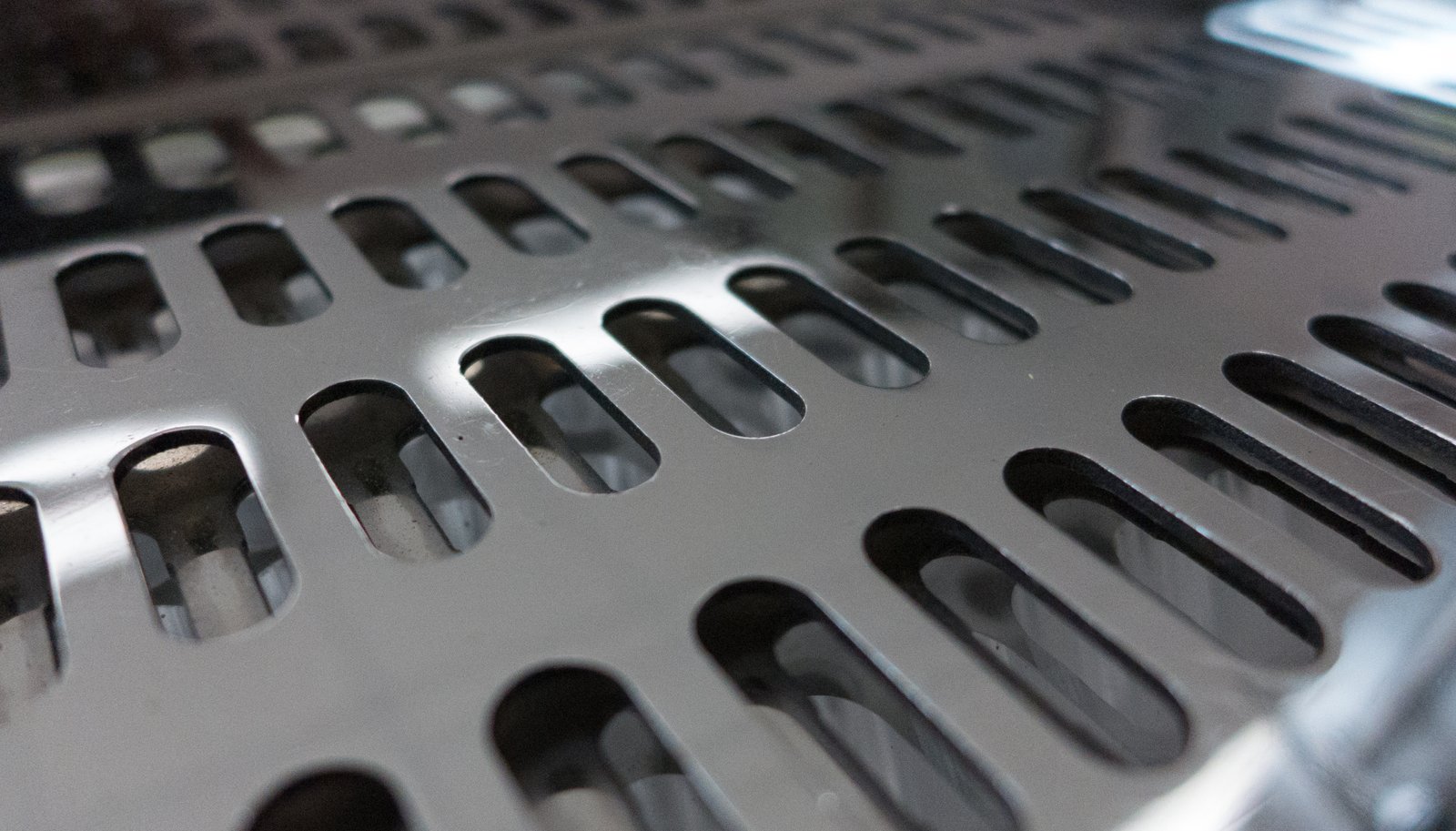
To truly appreciate the advantage of stainless steel, one must look beyond a simple comparison of melting points and consider the physics of a thermal event and the material's behavior under such extreme duress. The goal of an enclosure is not just to house the batteries, but to act as a miniature fire-rated vessel, containing immense energy release. This requires a material that doesn't just survive the heat but continues to perform its mechanical function—containment—while subjected to it. The performance difference is not incremental; it is a fundamental divergence in capability that has profound implications for system safety and design philosophy. As battery technologies continue to pack more energy into smaller spaces, this heat resistance becomes the single most important property of the enclosure material.
Thermal Runaway Dynamics: A Race Against Extreme Heat
A thermal runaway is a rapid, self-sustaining decomposition reaction within a battery cell. It typically starts with a short circuit, overcharging, or physical damage, leading to a rapid increase in internal temperature. As the heat rises, the cell vents flammable electrolyte vapors and hot gases. A study by the U.S. National Renewable Energy Laboratory (NREL) confirmed that peak temperatures inside a single failing lithium-ion cell can easily exceed 850°C.
This process is incredibly fast, with the event escalating from initial failure to catastrophic venting in a matter of seconds. The enclosure's primary job is to withstand both the initial burst of heat and the sustained high temperatures as the reaction potentially spreads to neighboring cells. The enclosure must hold its ground, containing the pressure and flames to prevent a cascading failure across the entire battery pack. This scenario is a brutal test of a material's thermomechanical stability.
Material Performance Under Fire: A Comparative Analysis
Here, the material science tells a clear story. Stainless steel, with its melting point of over 1400°C, remains solid and structurally sound at the peak temperatures of a thermal event. It retains a significant portion of its tensile strength even at 800-900°C, allowing it to resist the internal pressure build-up from vented gases. In essence, it performs its duty as a containment vessel. A fire safety engineering firm we partner with in Russia conducted a compelling test: a stainless steel enclosure successfully contained a simulated multi-cell thermal runaway for over 30 minutes, allowing ample time for fire suppression systems to operate.
Conversely, an aluminum alloy enclosure subjected to the same test failed in under 5 minutes. As the temperature approached 660°C, the material softened dramatically, losing its ability to contain pressure. It then breached, releasing flames and molten material. Plastics and composites fare even worse, with decomposition temperatures often below 300°C. They offer virtually no meaningful resistance and can add fuel to the fire, exacerbating the hazard. This stark difference in performance underpins the entire safety case for using stainless steel.
Beyond Melting Point: Thermal Conductivity and Stability
An often-overlooked aspect is thermal conductivity. Stainless steel has a significantly lower thermal conductivity than aluminum. This attribute is a double-edged sword that, in this application, proves highly beneficial. While it means heat from normal operation dissipates more slowly, it also means that heat from a failing cell is transferred much more slowly to adjacent cells. This "thermal insulation" effect can be the key to stopping a chain reaction in its tracks.
For a client in India who is developing stationary energy storage units for dense urban environments, this low thermal conductivity was a critical design factor. By using our MFY stainless steel sheets, they were able to design a modular system where a failing module is thermally isolated from its neighbors, preventing a cascading failure across the entire rack. This is a vital safety feature when a BESS is located in the basement of a hospital or an apartment building. The material's inherent stability at high temperatures ensures that this thermal barrier remains intact when it is needed most.
Stainless steel melts above 1400°CTrue
Stainless steel's melting point exceeds thermal runaway temperatures (800-1000°C), maintaining structural integrity when aluminum would melt.
Aluminum is safer for battery enclosuresFalse
Aluminum melts at 660°C - below thermal runaway temperatures - causing catastrophic enclosure breaches, while stainless steel withstands the heat.
What are the safety challenges faced by lithium battery enclosures?
Engineers are in a constant battle against multiple threats when designing battery enclosures, from the violent internal pressures of a cell failure to external physical impacts. A simple pothole or minor collision can subject the pack to immense shock and vibration, potentially damaging cells and initiating a failure. You're not just designing a box; you are engineering a miniature armored vault. The challenge is creating a housing that can withstand these varied forces—thermal, mechanical, and chemical—while remaining practical and cost-effective. The consequences of underestimating these challenges are severe, impacting not just the product but public safety.
The primary safety challenges for lithium battery enclosures include containing extreme heat and pressure from thermal runaway, resisting physical impact and penetration, preventing moisture and contaminant ingress which can cause short circuits, and managing electrical isolation to prevent shorts and ensure user safety.
The design of a battery enclosure is a multi-faceted engineering problem where the solution must be holistic. It's not enough to solve for just one variable, like heat. For instance, I worked with a client that developed an incredibly heat-resistant enclosure but failed to adequately seal it against moisture. During field trials in a humid Southeast Asian climate, water ingress led to a short circuit and a thermal event—the very thing they were trying to prevent. This experience taught us both a valuable lesson: a battery's safety is only as strong as the weakest link in its protective system. The enclosure must function as a complete, integrated shield against a host of simultaneous threats. This requires a material that offers a balanced profile of properties, capable of handling mechanical stress, environmental hazards, and the extreme internal forces of a battery failure.
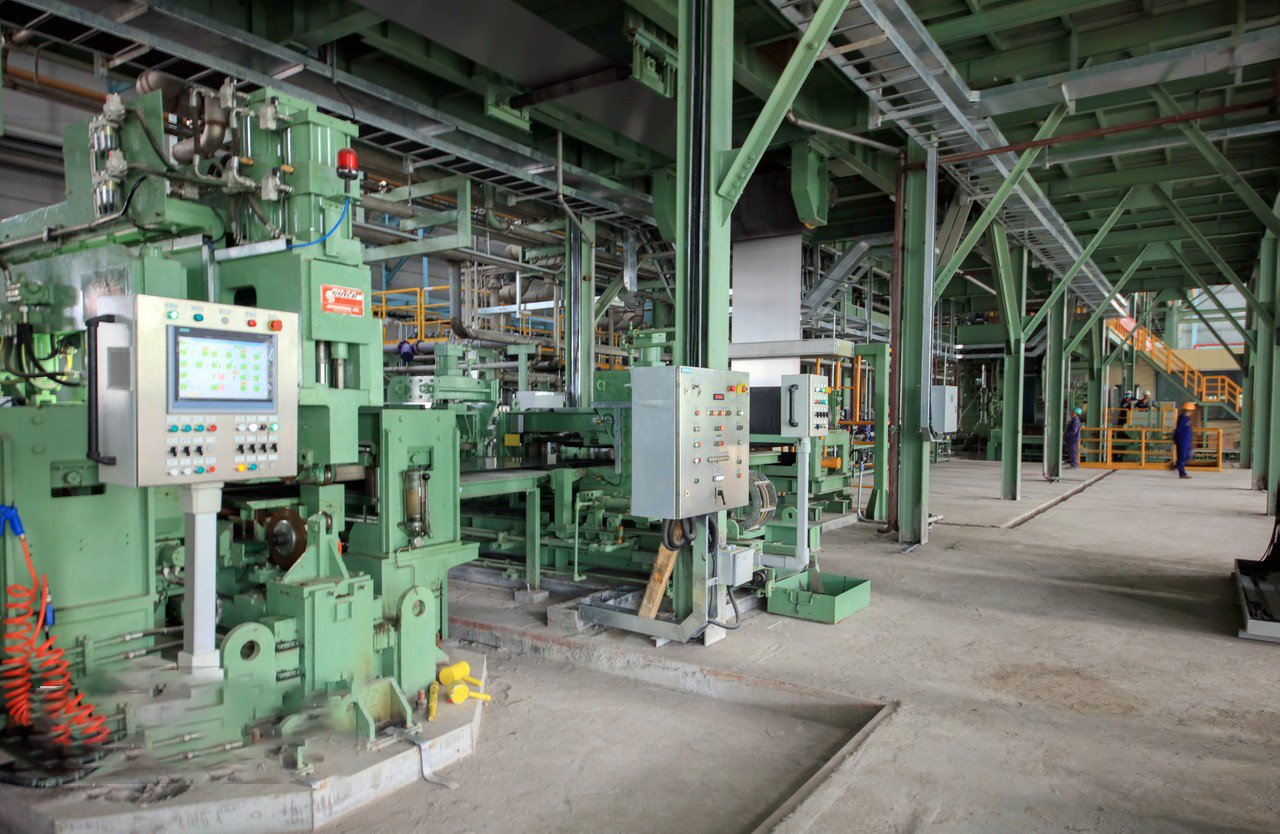
The complexity of ensuring battery safety cannot be overstated. It requires a deep, systems-level understanding of all potential failure modes. An effective enclosure is the cornerstone of this safety system, acting as the first and last line of defense. It must be designed not for the ideal operating conditions, but for the harshest, most demanding moments of its lifecycle. This means anticipating and mitigating risks from every angle. The material chosen must provide a robust foundation upon which all other safety features are built. At MFY, we stress to our clients that the material specification is not merely a technical detail but the fundamental decision that will define the resilience and ultimate safety of their product.
Internal Threats: Containing Thermal Runaway
The most formidable challenge is containing the violent energy release of a thermal runaway. This is not a gentle warming but an explosive event that generates intense heat exceeding 850°C and a rapid pressure increase from vented gases. An inadequate enclosure will rupture, turning a containable incident into a dangerous fire. The material must possess both a high melting point to withstand the heat and high tensile strength to resist the pressure, even at elevated temperatures.
Furthermore, the design must incorporate effective venting to release this pressure in a controlled manner, directing hot gases away from occupants or sensitive equipment. A client in the electric marine industry faced this exact challenge. Their vessel's battery packs are located in confined spaces where an uncontrolled release could be catastrophic. We worked with them to select a specific grade of 316L stainless steel sheet4, which provided the necessary corrosion resistance for the marine environment and the thermomechanical strength to contain a failure, while they engineered a sophisticated directional venting system integrated directly into the enclosure walls.
External Threats: Impact and Environmental Ingress
Battery enclosures, especially in mobile applications like EVs or construction equipment, must be built to endure a lifetime of physical abuse. This includes shock from rough terrain, vibration from engines, and, most critically, penetration from road debris or in the event of a collision. A breach from an external impact can directly damage cells, triggering a thermal runaway. The enclosure material must therefore have high impact strength and ductility—the ability to deform without fracturing.
Simultaneously, the enclosure must be perfectly sealed to prevent the ingress of water, dust, and corrosive agents like road salt. Moisture is a primary cause of short circuits, which can lead to fires. We supplied stainless steel sheets to a manufacturer of agricultural machinery, a target client for MFY. Their battery packs are constantly exposed to dust, moisture, and chemical fertilizers. They chose stainless steel not only for its strength but for its excellent corrosion resistance and ability to maintain a hermetic seal over years of service, ensuring the long-term integrity and safety of the battery system.
Electrical and Chemical Challenges
Beyond the dramatic events of fire and impact, the enclosure must manage more subtle electrical and chemical risks. The material itself must not create an electrical hazard. While metals are conductive, the enclosure must be designed to be properly grounded and isolated from the live components within. Stainless steel's surface can form a passive, non-conductive oxide layer, but proper design of internal mounting and insulation is still paramount.
Chemically, the enclosure must be resistant to the corrosive electrolytes that can be released during a cell failure or minor leak. These chemicals can degrade weaker materials over time, compromising their strength and containment capability. Stainless steel, particularly grades with higher chromium and nickel content like 3165, offers superior resistance to a wide range of chemicals. This ensures that even in the event of a minor leak, the enclosure remains structurally sound and ready to perform its primary safety function if the situation escalates.
Thermal runaway exceeds 850°CTrue
Thermal runaway events in lithium batteries can generate temperatures surpassing 850°C, requiring enclosures to withstand extreme heat.
Moisture only affects electrical systemsFalse
Moisture ingress can cause both short circuits AND accelerate corrosion, creating multiple failure pathways in battery systems.
How can stainless steel sheets address these safety and heat resistance challenges?
Feeling stuck between choosing a lightweight material that compromises on safety and a safe material that adds weight? This is a common dilemma in battery design. Engineers often feel forced to trade critical fire resistance for marginal gains in weight efficiency, creating inherent risks. Stainless steel sheets elegantly resolve this conflict by offering a solution where safety is not a trade-off, but the foundational principle. Their unique combination of properties directly counters the most severe threats that lithium-ion batteries pose. By choosing stainless steel, you are not just selecting a material; you are adopting a safety-first design philosophy that protects your product, your brand, and your customers.
Stainless steel sheets directly address safety challenges with their >1400°C melting point to contain thermal runaway, high tensile strength to resist impact and pressure, and excellent corrosion resistance to prevent degradation and ensure a long-term, contaminant-proof seal, creating a truly robust protective system.
The practical application of stainless steel in solving these challenges is something I see regularly. A manufacturer of electric forklifts, one of our key target clients, came to us with a problem. Their existing aluminum battery casings were showing signs of deformation and corrosion after just a couple of years in a demanding warehouse environment, which included a cold storage section. They were concerned about the potential for impact damage from daily operations and the long-term risk of a seal failure. We helped them transition to using MFY's 304-grade stainless steel sheets6. The result was an enclosure that not only eliminated the corrosion issue but also provided vastly superior impact resistance. The peace of mind this gave their engineering team and, more importantly, their end-users, was invaluable. This is the tangible impact of stainless steel: it replaces uncertainty with resilience.
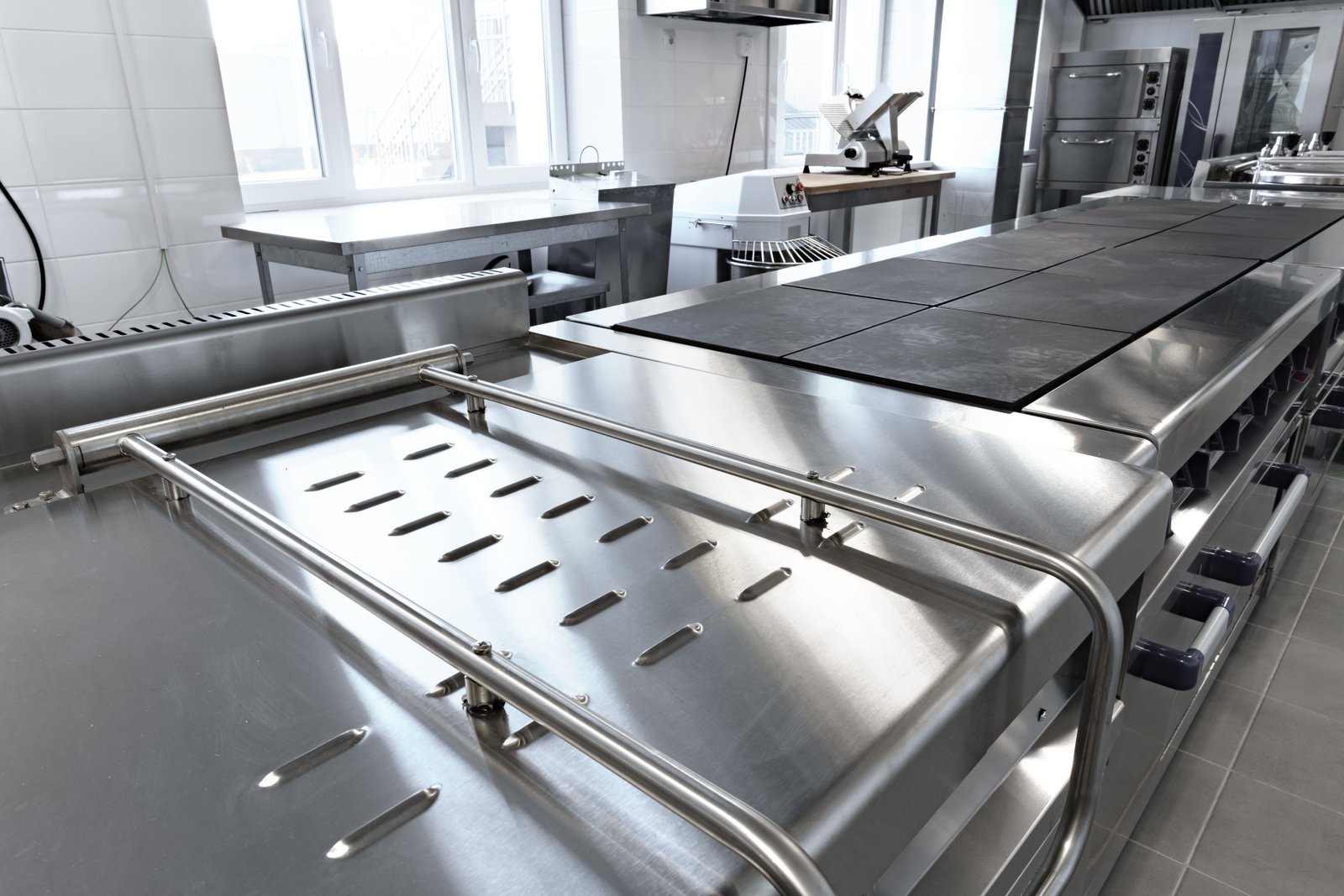
The decision to use stainless steel is an investment in resilience. It provides a comprehensive solution that addresses the multifaceted safety challenges of modern battery systems in a way that other materials simply cannot match. Its properties work in concert to create a protective shell that is resistant to heat, pressure, impact, and chemical attack. This holistic protection is why we are seeing its adoption accelerate across industries where reliability is non-negotiable, from heavy industry and transportation to critical energy storage. In the following sections, we will break down exactly how the specific attributes of stainless steel translate into a safer, more reliable battery enclosure, moving from theoretical properties to tangible, real-world benefits.
Unmatched Thermal Containment Capability
The single greatest advantage of stainless steel's thermal stability7 is its ability to withstand the extreme temperatures of a thermal runaway. With a melting point above 1400°C, it remains solid and structurally stable long after aluminum would have melted and plastics would have vaporized. This high-temperature stability is crucial for preventing cell-to-cell propagation, which is the primary mechanism by which a single cell failure escalates into a full-pack fire.
Imagine a battery pack for an electric bus, which contains thousands of individual cells. If one cell fails, it releases a jet of superheated gas. In a stainless steel enclosure, the casing absorbs and contains this energy, and its low thermal conductivity helps to isolate the heat, preventing adjacent cells from reaching their own critical temperature thresholds. This fire-breathing demonstration, which we've seen in test videos from safety labs, is the most powerful argument for stainless steel. It doesn't just delay failure; it actively works to contain and isolate it, turning a potential catastrophe into a manageable incident.
Superior Mechanical Strength and Ductility
Lithium battery enclosures need to be tough. They must resist penetration from road debris, withstand shocks from rough handling, and maintain their shape in a collision. Stainless steel offers a formidable combination of high tensile strength and ductility8. This means it can absorb a significant amount of energy before it fails. Unlike more brittle materials, it tends to deform upon impact rather than shatter, maintaining its containment function even after a significant mechanical event.
We supplied our stainless steel sheets to a company building battery packs for mining equipment—a classic MFY target client. The operational environment is brutal, with constant vibration and a high risk of impact from rocks and equipment. Their previous composite enclosures were prone to cracking. By switching to a 3mm-thick stainless steel sheet, they created a pack that could withstand direct, heavy impacts without breaching. This mechanical robustness ensures that external physical threats do not become the trigger for an internal thermal event, breaking a dangerous link in the chain of failure.
Intrinsic Corrosion and Chemical Resistance
A battery enclosure must provide a perfect, lifelong seal against the environment. Moisture, salt, and chemicals can all lead to corrosion, which can weaken the enclosure and create pathways for short circuits. Stainless steel's inherent corrosion resistance, thanks to its chromium content which forms a passive, self-healing oxide layer, makes it the ideal material for long-term durability.
Grades like 316L, with added molybdenum, are particularly effective in corrosive environments, such as marine applications or regions where road salt is heavily used. A customer in Russia, operating a fleet of commercial EVs, specifically chose our 316L stainless steel sheets9 for their battery packs to combat the harsh winter road conditions. This choice ensures that the integrity of the enclosure will not be compromised over the vehicle's lifespan, preventing long-term degradation from becoming an acute safety risk. This "fit and forget" reliability is a cornerstone of safe system design.
Stainless steel melts above 1400°CTrue
Stainless steel's high melting point (>1400°C) makes it ideal for containing thermal runaway in batteries, unlike aluminum which would melt at lower temperatures.
Stainless steel is brittle like glassFalse
Stainless steel is ductile and deforms upon impact rather than shattering, making it excellent for impact resistance in battery enclosures.
What technical recommendations ensure optimal use of stainless steel for battery enclosures?
So you've decided on stainless steel—an excellent choice for safety. But simply selecting the material isn't the end of the journey. To truly harness its potential, you must consider the specific grade, thickness, and design of the enclosure. Making a mistake at this stage can lead to an over-engineered, heavy, and costly product, or an under-engineered one that fails to provide the expected level of protection. The key is to optimize the design for maximum safety with maximum efficiency. With the right technical approach, you can create an enclosure that is both incredibly resilient and commercially viable.
For optimal use of stainless steel, select the appropriate grade (e.g., 304for general use, 316L for corrosive environments), engineer the correct sheet thickness based on FEA stress analysis, and incorporate design features like stiffening ribs and controlled venting to manage pressure and structural integrity.
As the Global Business Director at MFY, I’ve had countless technical discussions with engineering teams from our target clients—manufacturing and construction firms—to refine their enclosure designs. One common pitfall is over-specifying. An engineering contractor for a BESS project initially wanted to use a very thick 5mm 316L sheet for a large enclosure, assuming "thicker is better." After reviewing their design and running a simulation, we demonstrated that a 3mm 304L sheet, intelligently designed with stiffening ribs, would meet all their safety requirements at a significantly lower weight and cost. This collaborative optimization process is crucial. It ensures the final product is not just safe, but also practical, efficient, and cost-effective, which is critical for bringing innovative and safe technology to a wider market. This is where a true supply chain partner adds value beyond just selling steel.
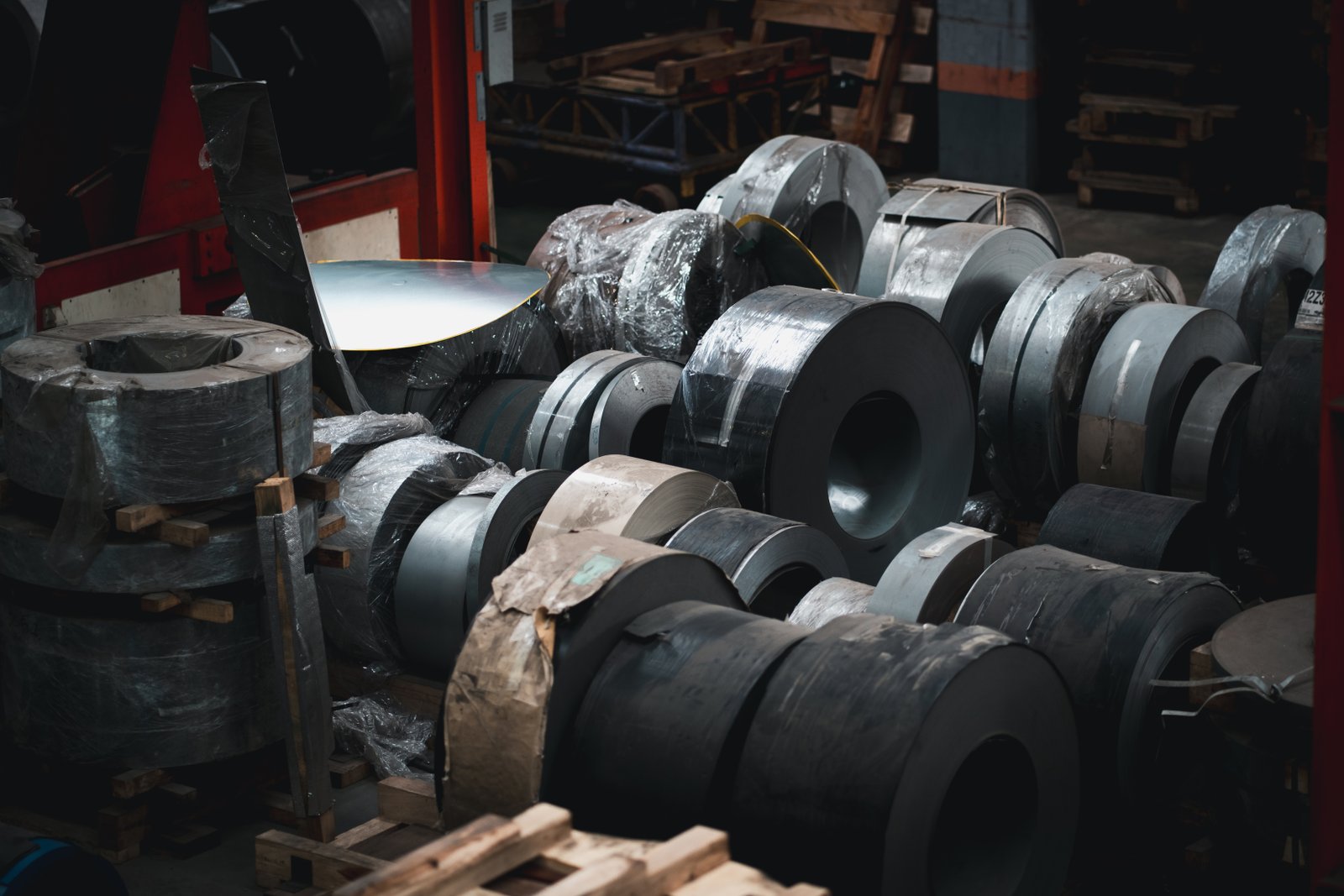
Achieving the perfect balance in stainless steel enclosure design is a science. It requires a detailed understanding of the material's properties, the specific threats of the application, and modern manufacturing techniques. A well-designed stainless steel enclosure is more than just a box; it's a precisely engineered safety system. The following recommendations provide a framework for engineers and designers to move from material selection to a fully realized, optimized, and effective product. By focusing on these key areas—grade selection, structural design, and fabrication—you can ensure your battery system is protected by an enclosure that is second to none in safety and reliability.
Grade Selection: Matching the Material to the Mission
The first and most critical decision is selecting the right grade of stainless steel. This choice should be driven by the specific environmental and chemical exposure the battery will face. For most applications, such as stationary storage or vehicles in moderate climates, Austenitic grades like 304 or 304L offer an excellent balance of strength, formability, and corrosion resistance at a reasonable cost. The "L" designation indicates low carbon content, which improves weldability and reduces the risk of corrosion at the weld seams.
For applications in highly corrosive environments, such as marine settings, coastal installations, or regions with heavy road salt use, 316L is the superior choice. The addition of molybdenum significantly enhances its resistance to chlorides and other corrosive agents. A client of ours, an equipment integrator building power packs for offshore platforms, uses our 316L sheets exclusively. The higher initial cost is easily justified by the prevention of corrosion-related failures and the extended service life in a saltwater environment.
Structural Design: Engineering for Strength and Efficiency
Once the grade is selected, the focus shifts to the mechanical design. Simply using a thick sheet of steel is a brute-force approach that adds unnecessary weight and cost. A more elegant and efficient solution is to use Finite Element Analysis (FEA) to model the stresses of an internal pressure event and an external impact. This allows engineers to determine the optimal sheet thickness.
Furthermore, the design should incorporate features that add strength without adding mass. Stiffening ribs, created by bending or stamping the sheet metal, can dramatically increase the enclosure's rigidity and ability to withstand internal pressure. Similarly, the strategic placement of welds and fasteners is critical. For instance, a client manufacturing EV battery packs used FEA to optimize their enclosure design, reducing the sheet thickness from 2.5mm to 1.5mm while adding a pattern of stamped ribs. The resulting enclosure was 40% lighter but met the same stringent impact and pressure test requirements.
Fabrication and Assembly: The Importance of Quality
The world's best design is only as good as its execution. The fabrication and assembly process is critical to the enclosure's final integrity. Welding, in particular, requires careful attention. Improper welding techniques can weaken the material or compromise its corrosion resistance at the seams. Using the correct welding parameters, filler material, and post-weld cleaning processes (like passivation) is essential to maintain the steel's protective properties.
Sealing is another critical aspect. High-quality gaskets, designed to withstand the expected temperatures and chemical exposures, must be used to create a perfect seal between enclosure sections. The fastener system must provide consistent clamping pressure without warping the flanges. At MFY, we often provide our clients with fabrication guidelines tailored to the specific grade of stainless steel they are purchasing. This ensures that the resilience we promise in our materials is fully realized in their final product, creating a truly reliable and safe containment system.
316L resists saltwater corrosionTrue
316L contains molybdenum which provides superior chloride resistance for marine environments.
Thicker steel always means better protectionFalse
Strategic design with stiffening ribs can provide equal protection at reduced thickness and weight.
Conclusion
Ultimately, choosing stainless steel sheets for lithium battery enclosures is a decisive move toward prioritizing safety. Its superior heat resistance, mechanical strength, and durability provide a robust, multi-faceted defense against catastrophic failure, ensuring the protection of assets, environments, and, most importantly, lives.
-
Discover why stainless steel is essential for enhancing battery safety and reliability ↩
-
Gain insights into how material choice affects battery safety and success rates ↩
-
Understand the factors driving aluminum's popularity in EV applications ↩
-
Understand the benefits of using 316L stainless steel in marine environments. ↩
-
Explore the chemical resistance properties of 316 stainless steel. ↩
-
Discover the advantages of using 304-grade stainless steel in battery applications. ↩
-
Learn how stainless steel contains thermal runaway to ensure battery safety. ↩
-
Understand the role of tensile strength and ductility in battery protection. ↩
-
Explore the corrosion-resistant properties of 316L stainless steel in battery casing. ↩
Have Questions or Need More Information?
Get in touch with us for personalized assistance and expert advice.
